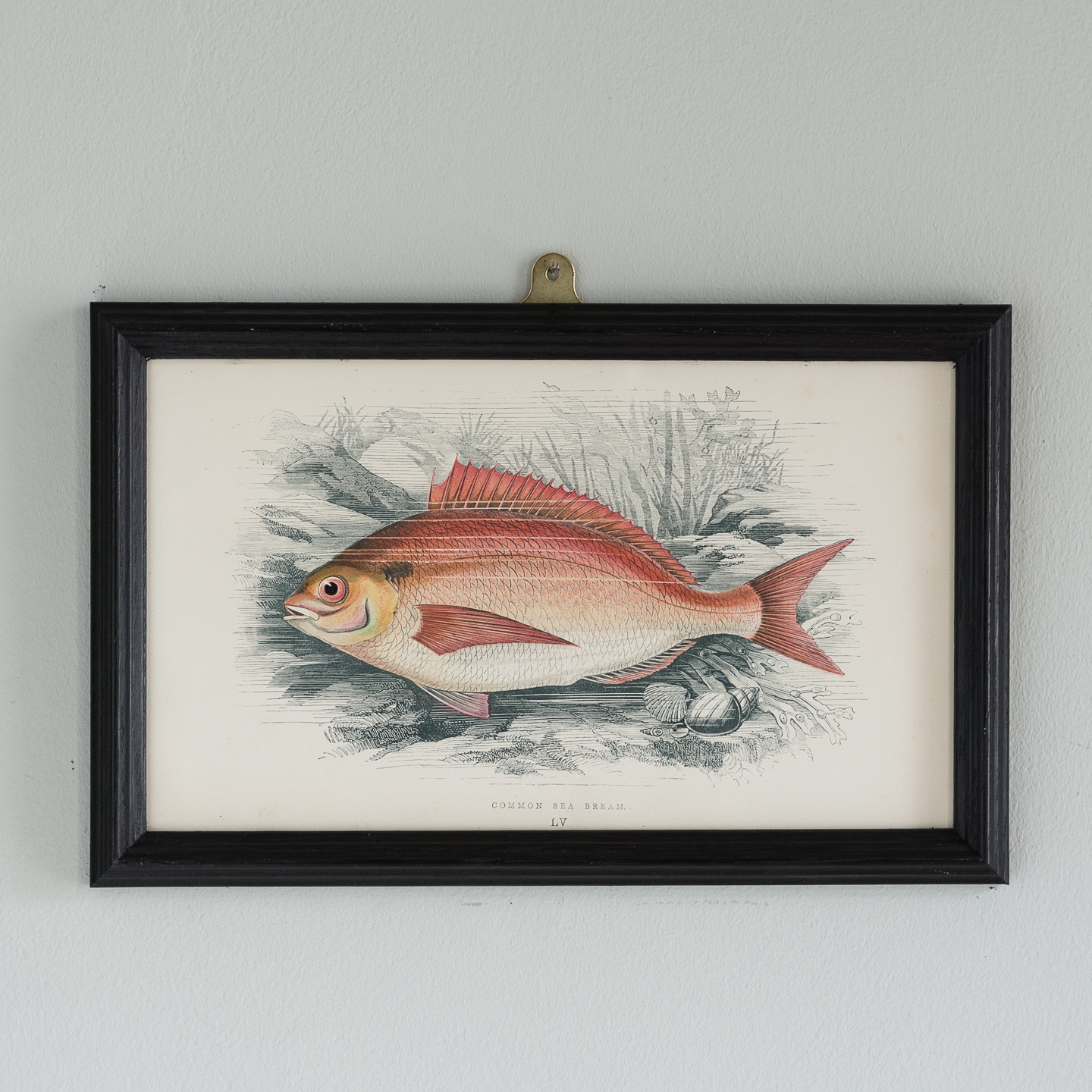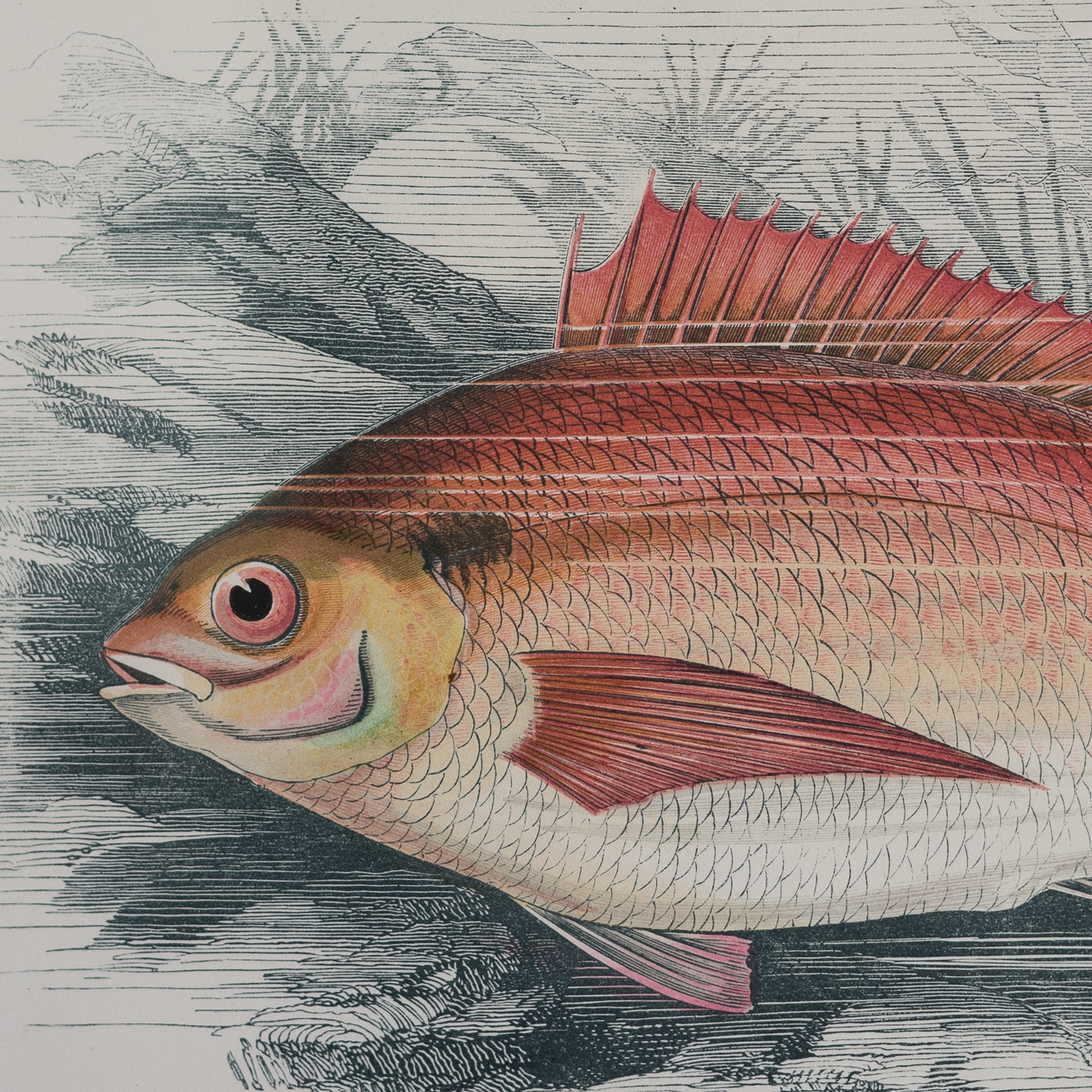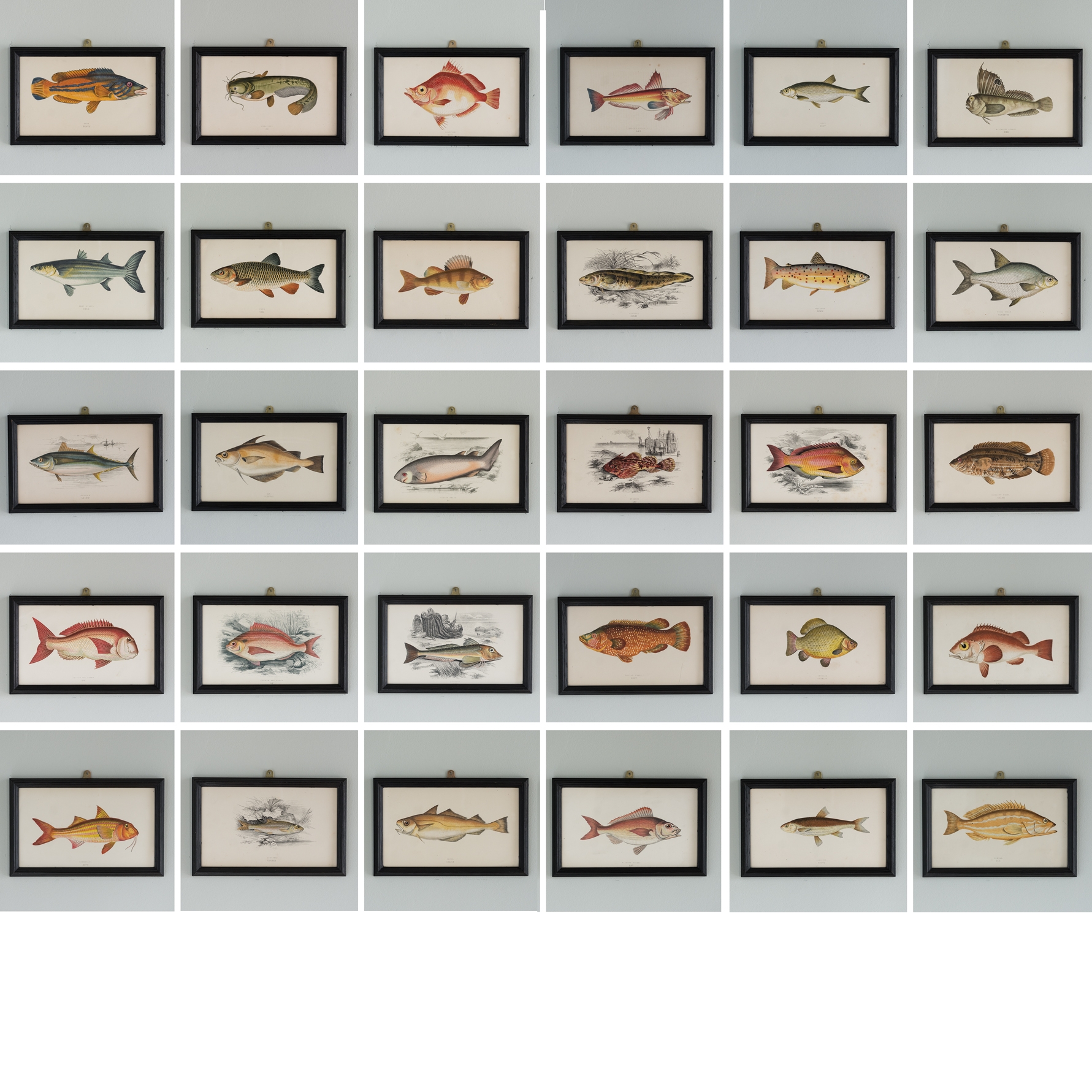Archived Stock - This item is no longer available
A History of British Fishes c1870
Wood engravings with original colour, presented in ebonised hand-waxed frame. 'Common Sea Bream'.
SOLD OUT
In stock
Jonathan Couch was a doctor in the tiny fishing village of Polperro, Cornwall. He studied at the united hospitals of Guy’s and St. Thomas’s and returned to Polperro, in 1810 where he was rarely to leave, dying on 13 April 1870, aged 81.
Shrewdly taking advantage of his location be became a naturalist specialising in ichthyology and trained in succession of fishermen to aid him in his observations made at and near Polperro. This information was carefully collected and sifted, as to the habits of fishes. His own drawings gave unique representations of the vivid natural colours of fishes while alive or immediately after death. Couch said himself, ‘drawn from their native element, with their native colours fresh upon them’ From Couch’s vivid drawings prints were made, engraved on boxwood by Alexander Francis Lydon, and printed by Benjamin Fawcett, one of the country’s finest nineteenth century colour printers.
Recently Viewed Items
-
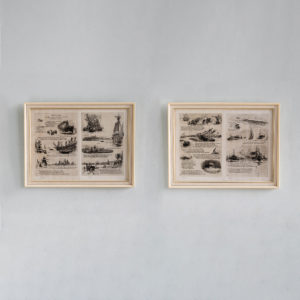
Our Fathers, To The Memory of the Nameless Killed and Wounded
£725 the pairOur Fathers, To The Memory of the Nameless Killed and Wounded
A set of four etchings in two frames depicting ships of war and life at sea in English history By William Wylie and accompanied by the words of Cpt. Ronald Hopwood's poem Our Fathers. William Lionel Wylie was the most distinguished marine artist of the late nineteenth and early twentieth centuries. He became almost a painter laureate to the Royal Navy, so much so that during his funeral, in a scene reminiscent of Nelson's state funeral in 1806, his body was rowed up Portsmouth Harbour in a naval cutter past battleships with dipped colours and bugles calling and quaysides lined with dockyard workers. Similarly Captain Ronald A Hopwood was described as the poet laureate of the Royal Navy by Time Magazine in 1941. His most enduring work, The Laws of the Navy, became and remains a sort of Works and Days primer for naval life, both inspiring and edifying seamen in the ways of the senior service. After the Battle of Jutland in 1916 when the press was critical of an apparent failure by the Royal Navy to achieve a clear victory against the Imperial German Navy the Times of London published The Old Ways, a poem by Hopwood and within this was a further poem, Our Fathers which was first written during the naval manoeuvres of 1913. Wyllie, we are told, was much taken with the verses and he arranged to illustrate them with the agreement of their author as a memorial of sorts to the dead (and perhaps as an apologia for the living) of the Battle of Jutland. The seaplane depicted appears to be a short type 184 used at Gallipoli where it became the first aircraft in the world to attack an enemy ship with an air-launched torpedo. The Battleship in the next image is of the King George V class and likely to be based on HMS Audacious, which Wylie had studied previously. The poem and illustrative etchings then go back in time to the navy of Elizabeth I's time. The sailing ships depicted are galleons of the type which chased the Spanish Armada out of the channel, a scene depicted at the bottom of the first print. The second framed picture depicts naval exercises and gunnery practice, with a galleon being scraped and caulked by hand on a secluded beach in the Spanish Main. It concludes with a scene of high-technology Super-Dreadnoughts of the Queen Elizabeth class - a naval nominative choice which perhaps inspires the scheme of the whole work of reflection.£725 the pair -
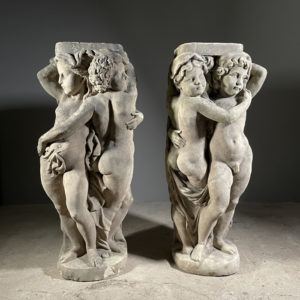
A pair of Victorian carved limestone figural groups
£6,800A pair of Victorian carved limestone figural groups
each stone carved in deep relief with a pair of embracing putti - almost as carytids - flat to the reverse for wall-mounting£6,800

